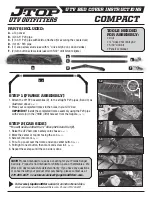
S
e
a
ti
n
g & S
a
fe
ty R
e
st
r
a
in
ts
Airbag Safety System
Your car has airbags. One airbag for the driver, and an
other for the passenger.
The car is also equipped with shoulder and lap belts. Airbags
are supplementary restraints to the seat belts.
In the event of a moderate to severe frontal collision, airbags
provide occupant protection additional to that provided by the lap
and diagonal seat belts. Both driver and passenger must wear
the seat belts at all times, whether or not an air bag is provided,
in order to minimise the risk of severe injury or death, no matter
how short the journey. An occupant who is properly restrained
by a seat belt, will be in the best position for full effectiveness of
the airbag in the event of airbag deployment.
The airbag system is designed to inflate when the car is
involved in a frontal, or near frontal collision, and the force of
impact is sufficient to warrant additional occupant protection.
The driver's airbag is housed in the centre of the steering wheel,
and that for the passenger in the dashboard. When triggered by
an electronic crash sensor, each air bag inflates in a fraction of
a second to provide protection for the occupant’s upper body,
and then deflates very rapidly to minimise any obstruction to
the driver.
Some parts of the system are designed to operate only once,
and need replacing after air bag inflation with new components,
before being ready for another deployment.
Remember that the seat belts, when correctly worn, provide
the primary crash protection to the occupants, especially in col-
21
AIRBAG INFLATED
ON IMPACT
w53b
oh_USA EliseExige E121.indd 23
15/03/2010 15:08:02
















































